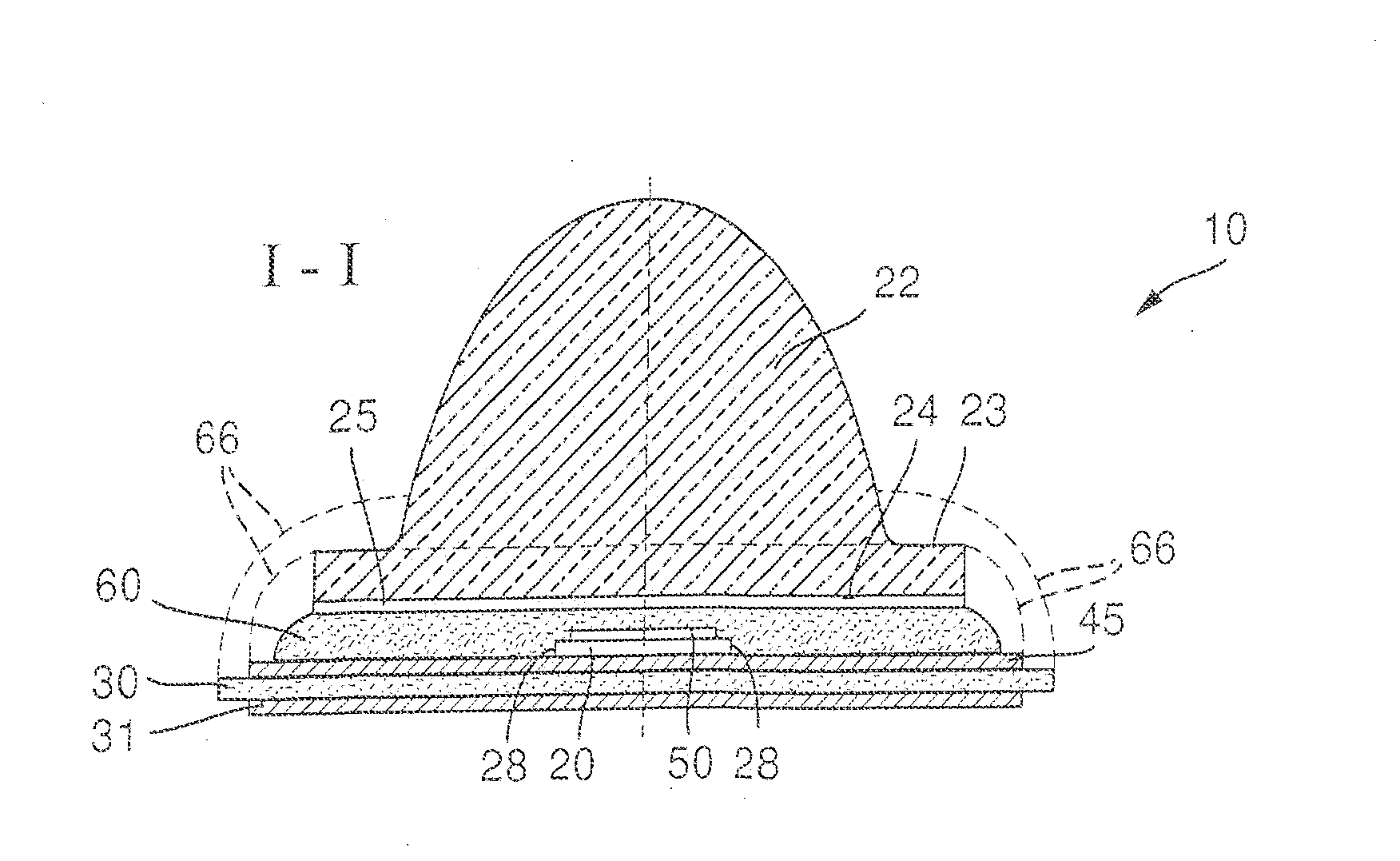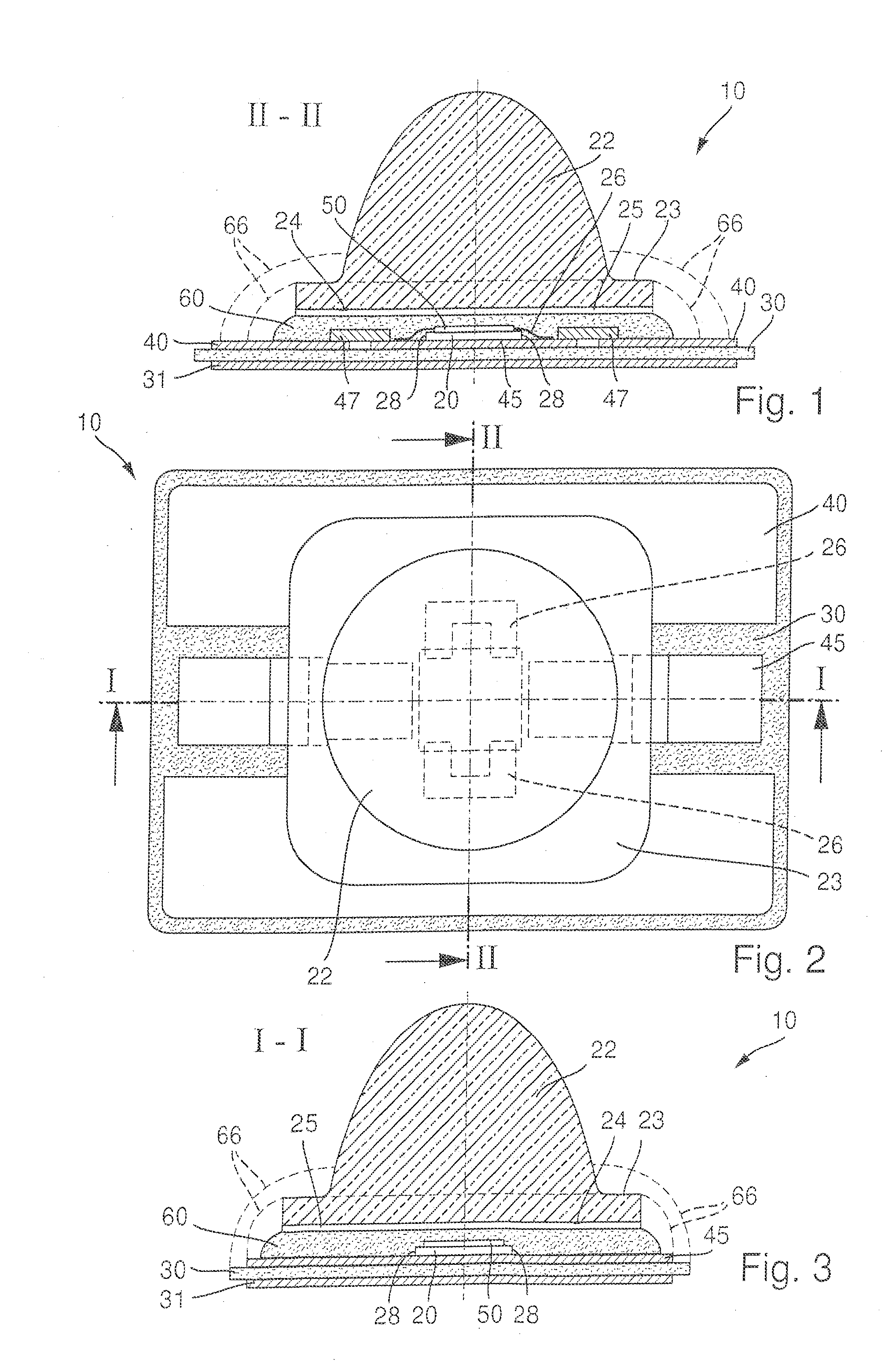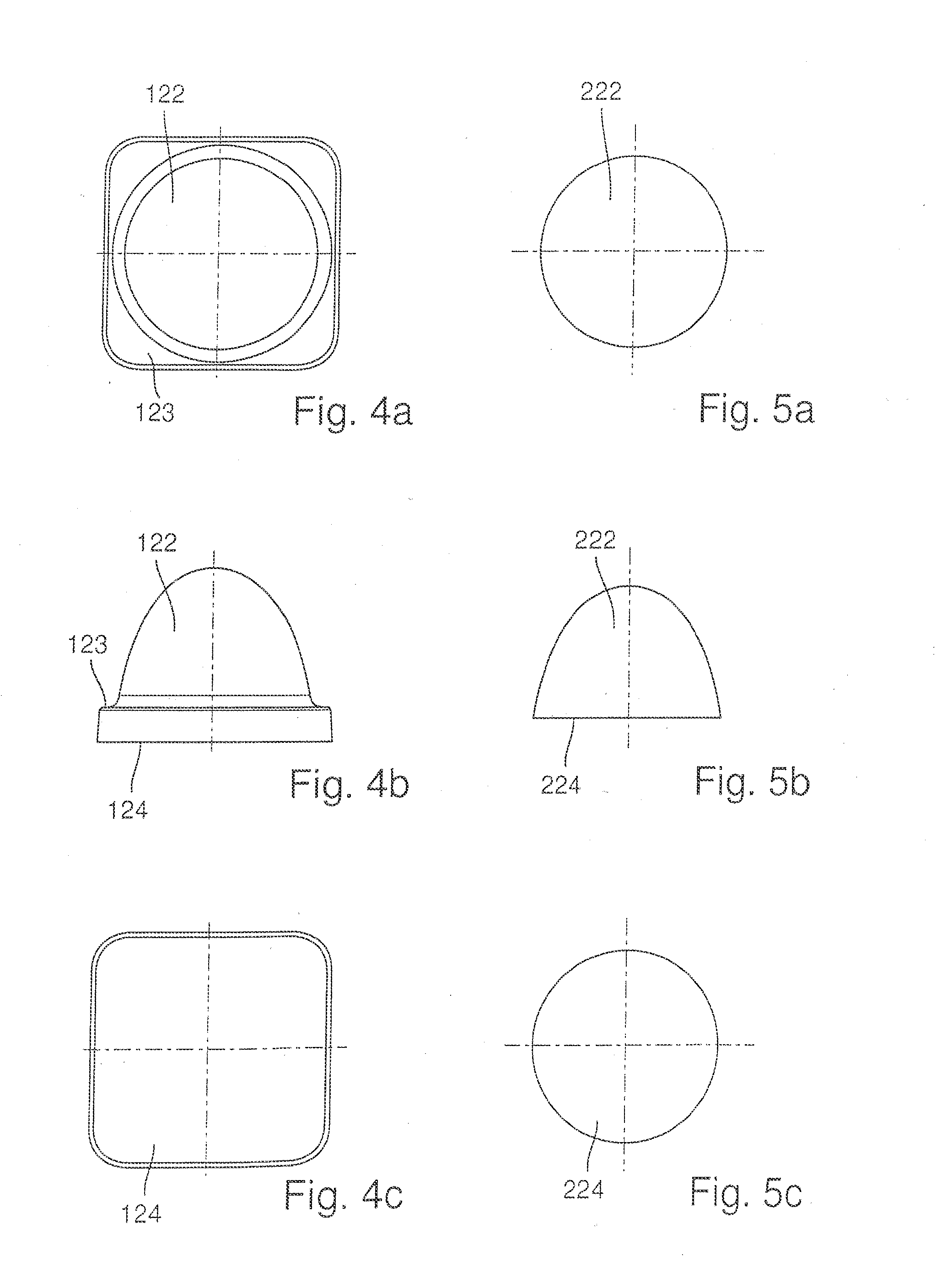Solar cell unit
a solar cell and unit technology, applied in the direction of diodes, semiconductor devices, electrical apparatus, etc., to achieve the effects of high temperature stability, good uv transparency, and strong frictional connection of secondary optical elements
- Summary
- Abstract
- Description
- Claims
- Application Information
AI Technical Summary
Benefits of technology
Problems solved by technology
Method used
Image
Examples
Embodiment Construction
[0030]The illustration in FIG. 1 shows a solar cell unit 10 with a semiconductor body 20 formed as a solar cell, a secondary optical element 22 in the shape of a half-ellipsoid with a circumferential collar-shaped bead 23. Secondary optical element 22 has a bottom side 24 and guides the light incident on secondary optical element 22 to the front side of semiconductor body 20. Optical element 22 has a planar surface on the entire bottom side 24, whereby part of the planar surface is arranged above a front side of semiconductor body 20. A first adhesion-promoting layer 25 connected by material bonding to bottom side 24 is formed on the entire bottom side 24. Substrate 30 on the bottom side has a full-surface metal layer 31 except for a narrow edge region. Substrate 30 in addition has a greater lateral extension than secondary optical element 22.
[0031]Semiconductor body 20 furthermore has a front side with a first electrical connection and a back side with a second electrical connectio...
PUM
 Login to View More
Login to View More Abstract
Description
Claims
Application Information
 Login to View More
Login to View More - R&D
- Intellectual Property
- Life Sciences
- Materials
- Tech Scout
- Unparalleled Data Quality
- Higher Quality Content
- 60% Fewer Hallucinations
Browse by: Latest US Patents, China's latest patents, Technical Efficacy Thesaurus, Application Domain, Technology Topic, Popular Technical Reports.
© 2025 PatSnap. All rights reserved.Legal|Privacy policy|Modern Slavery Act Transparency Statement|Sitemap|About US| Contact US: help@patsnap.com



